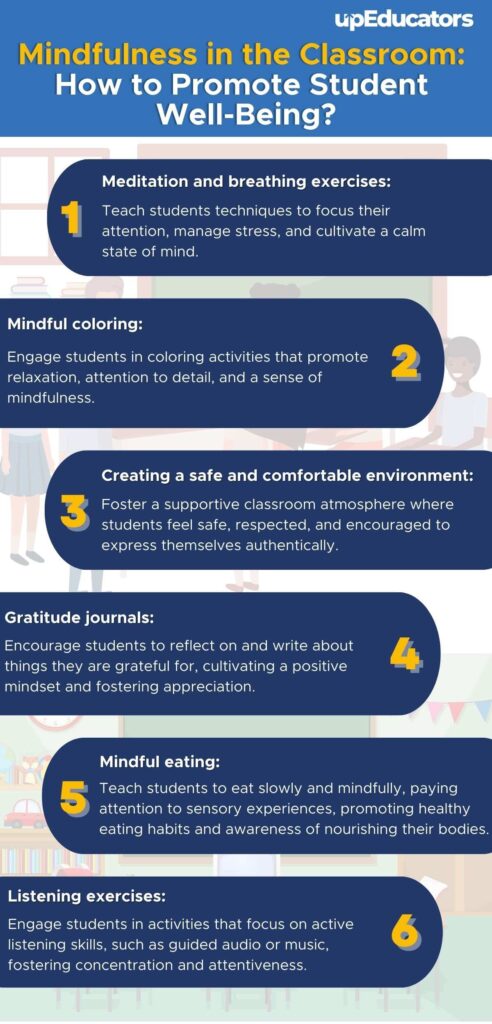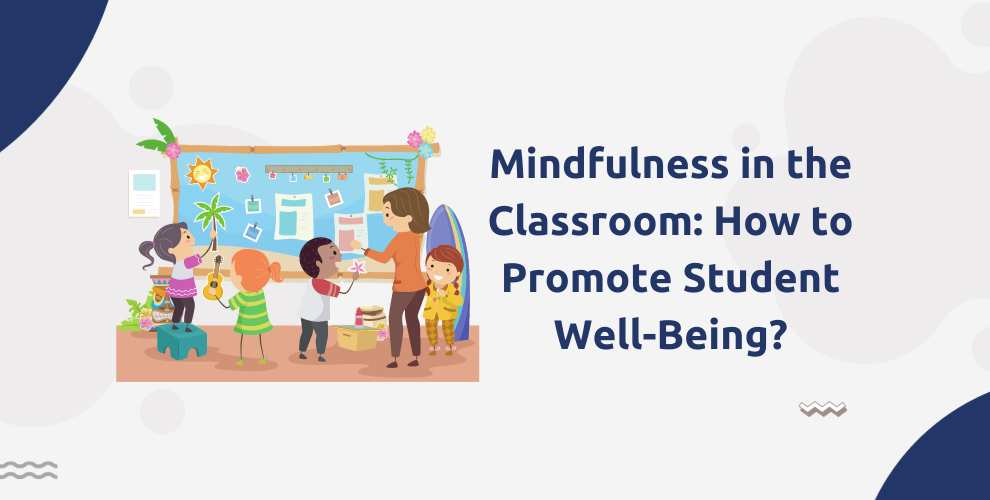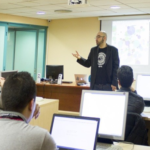Aman was a student in grade 10 who struggled with anxiety and stress in the classroom. Every time he had to give a presentation or participate in group discussions, he felt overwhelmed and anxious. As a result, his grades began to suffer, and he felt increasingly isolated from his peers.
Fortunately, Aman’s teacher introduced mindful activities into the classroom, including deep breathing exercises, meditation, and yoga. At first, Aman was hesitant to participate, but his teacher reassured him that these activities were designed to help him manage his stress and anxiety.

After a few weeks of practicing these activities, Aman noticed a significant improvement in his mental health. He felt more relaxed and focused in the classroom, and he was able to participate in group discussions without feeling overwhelmed. His grades also began to improve, and he felt more connected to his peers.
Overall, mindful activities played a critical role in helping Aman manage his stress and anxiety in the classroom. By incorporating these activities into the classroom, Aman’s teacher was able to create a more supportive and inclusive learning environment that benefited all of the students in the class.
Strategies for Promoting Mindfulness in the Classroom
In recent years, there has been growing recognition of the importance of mental health and wellbeing in the classroom. One approach that has gained significant attention is the use of mindful activities to promote stress reduction and mental wellness. Mindful activities such as deep breathing exercises, meditation, and yoga have been shown to have a positive impact on mental health, helping students manage stress and anxiety, improve focus and attention, and promote overall well being. As a result, many educators are now incorporating mindful activities into their classroom routines as a way to create a more supportive and inclusive learning environment.
After talking to thousands of educators, upEducators– A Google for Education Partner Company has discovered the most commonly used mindful practices for students. In this blog, we will explore the best mindful activities that teachers can use in their classrooms.
Meditation and Breathing Exercises
Meditation and breathing exercises are two powerful tools that can help build mindfulness in the classroom.
Meditation involves focusing one’s attention on a particular object, thought, or activity, while breathing exercises involve intentionally regulating one’s breath to promote relaxation and calmness. Both practices can be used to cultivate a sense of mindfulness, helping students become more present and focused in the classroom.
When incorporated into the classroom routine, these practices can create a more supportive and inclusive learning environment, helping students feel more connected to their peers and teachers.
By building mindfulness in the classroom, students can develop important skills that will benefit them throughout their lives. These skills include increased self-awareness, emotional regulation, and empathy, which can help students navigate challenging situations and build positive relationships with others.
Mindful Colouring
Mindful colouring is a form of art therapy that involves colouring intricate designs and patterns in a relaxed and focused manner, paying attention to the present moment and the sensations in your body. It has been found to have a calming effect on the mind and body and can help reduce stress, anxiety, and depression.
When students engage in mindful colouring, they can focus on the present moment, the sensations in their body, and the activity at hand. This can help them become more aware of their thoughts and feelings and learn how to manage them more effectively.
Creating safe and comfortable environments
Creating a safe and comfortable environment for students is crucial in promoting mindfulness in the classroom. When students feel safe and comfortable, they are more likely to be open to learning and to engage in mindfulness practices.
Here are some ways to create a safe and comfortable environment in the classroom:
- Take the time to get to know your students and create positive relationships with them. Show an interest in their lives and make them feel valued and respected.
- Create an environment where students feel comfortable sharing their thoughts and feelings. Encourage them to express themselves and listen actively when they speak.
- Make sure the classroom is clean, organized, and free of clutter. Use calming colors and lighting to create a relaxing atmosphere.
- Model mindfulness practices for your students by practicing them yourself. Take time for mindfulness breaks throughout the day and incorporate mindfulness activities into your lessons.
Gratitude Journals
Creating gratitude journals can be a helpful tool in building mindfulness in the classroom. Gratitude journals are a simple yet powerful way to promote mindfulness and help students develop a positive mindset.
Gratitude journals involve writing down things that you are grateful for on a regular basis. This practice can help students become more aware of the positive things in their lives and shift their focus away from negative thoughts and feelings.
Begin each day by having students write down one thing they are grateful for. This can be done individually or as a group activity. Moreover, set aside time each week for students to write in their gratitude journals. Encourage them to write about the things that they are thankful for and how those things make them feel.
Mindful Eating
Mindful eating is a practice of paying attention to your food and the experience of eating, without judgment or distraction. It involves being fully present and engaged with the act of eating, using all of your senses to observe the colors, smells, textures, tastes, and even sounds of the food.
Practicing mindful eating can help cultivate mindfulness in the classroom by promoting awareness, focus, and self-regulation. It can also help reduce stress, anxiety, and emotional eating, and promote healthier eating habits.
Listening Exercises
Listening exercises can be a powerful tool for building mindfulness in the classroom. They can help students become more aware of their surroundings and the people around them. By paying attention to sounds and voices, students can become more present in the moment and less distracted by their thoughts.
Moreover, listening exercises can also help students develop their ability to focus and concentrate. By practicing attentive listening, students can learn to tune out distractions and stay focused on the task at hand.
Mindfulness practices can have a significant impact on the well-being and academic success of students. By promoting awareness, focus, and self-regulation, mindfulness can help students develop important skills such as empathy, communication, and stress management. There are various tips and strategies that teachers can implement to bring mindfulness into the classroom, such as breathing exercises, movement breaks, gratitude practices, and listening exercises. It’s important to remember that mindfulness is a skill that requires practice and consistency, and that it can take time to see the benefits.
Author: This article is written by Samiya Rashid for upEducators blog.




